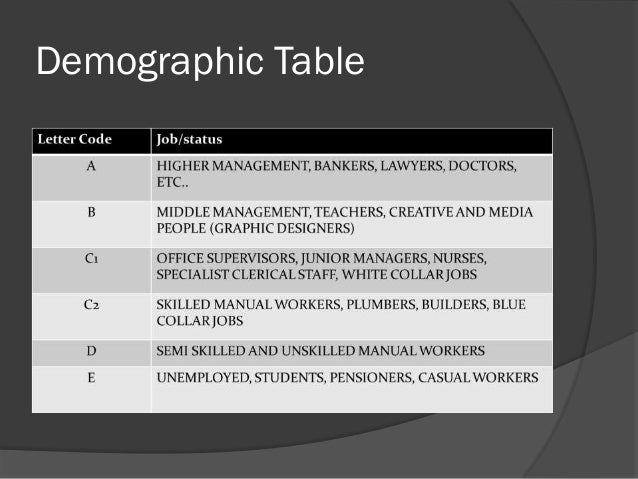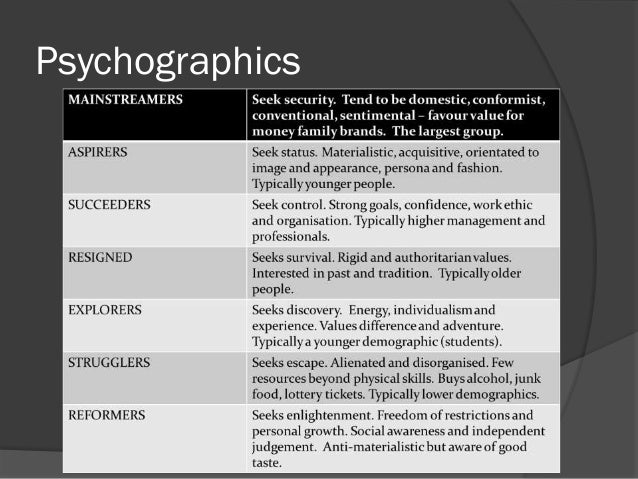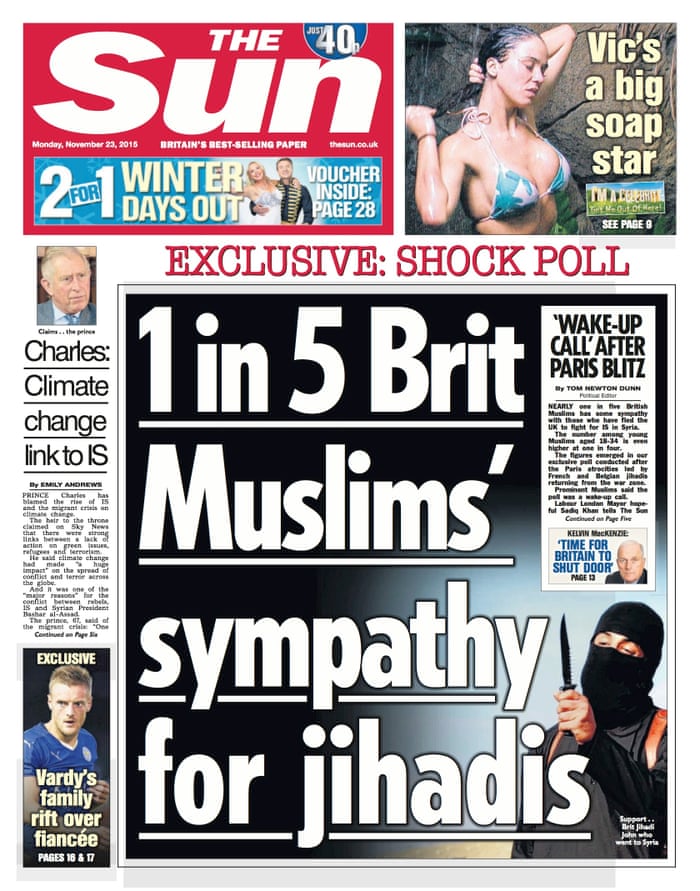Our advert is: Sports drinks for women over 50.
Starting notes for our advert:
> Netball courts
> Teachers playing netball?
> Drink - close up of it to see the label
> Louis = making the music for the advert
> Show product at the end of the advert as well as throughout
> Light blue and lime green logo
> Regan (me) shooting = young teacher
> Natural lighting = outside
> People doing exercise/moving in the background (blurred) with the product next to a netball (in focus) - low angle
> Teacher wearing darker clothes and when it switches to Regan, brighter clothes are worn to show youth
> "Be young, be free, be healthy!" = slogan
EVALUATION:
The task that we were given was to create an advert based on a sports drink for women over 50. The name of our brand was REFUEL. We tried to sell the product by showing an older woman holding the product and then turning into a younger and quicker woman.
I worked with Maisie, Daisy and Ami. Filming was mainly on Ami as we were using her camera and iPad. Planning was all of us but I came up with the general idea for the advert. Maisie and Daisy both did some research for the advert. Ami made the logo with her iPad for our sports drink. Daisy dedicated herself as the "director" and Maisie got a lot of the props included in the advert.
We planned our filming by focusing firstly on the easier and shorter shots. For example, we started by filming Mrs Cooper as she is a teacher and has a busy schedule so we based a lot of the filming around when she was free as well as all of us.
We planned our advert the first day we found out what it would be based on and we developed the ideas as time went on.
Initially, we were going to make a harder advert to film however, we didn't have a lot of time to complete the advert so we had to change our plans. Our sequence wasn't as successful as we originally thought but we had to change everything based around what we had and how long we had to do it.
What went well was our different ideas about the camera angles. movements and shots throughout the advert. Also, we managed well to incorporate everyone in the group into the visual aspect of the advert. However, we could have worked a lot quicker in the organisation and preparation of the advert as we were discussing everything longer than we spent filming.
From this task ,we have learnt teamwork skills and how to handle everyone's different perspectives and opinions on certain things. Our communication improved the longer we spent on our advert and we did have to compromise quite a lot due to different hurdles during the production.
In future products, what we have learnt from this will be useful as we can plan a lot quicker and dedicate more time to the actual filming and editing of the advert. Communication is very important and so now having the extra knowledge that we didn't have before, we will be able to make a more successful advert.
Friday, October 19, 2018
Friday, October 12, 2018
Audience
DEMOGRAPHIC PROFILING:
In order of job status, includes money etc.

PSYCHOGRAPHIC PROFILING:
mainstreamers - seek security.
aspirers - seek status.
succeeders - seek control.
resigned - seek survival.
explorers - seek discovery.
strugglers - seek escape.
reformers - seek enlightenment.
(as we go up this list, materialism increases)

TARGET AUDIENCE vs NICHE AUDIENCE
Target audience - females/males etc.
Niche audience - targeting a very specific audience.
In order of job status, includes money etc.

PSYCHOGRAPHIC PROFILING:
mainstreamers - seek security.
aspirers - seek status.
succeeders - seek control.
resigned - seek survival.
explorers - seek discovery.
strugglers - seek escape.
reformers - seek enlightenment.
(as we go up this list, materialism increases)

TARGET AUDIENCE vs NICHE AUDIENCE
Target audience - females/males etc.
Niche audience - targeting a very specific audience.
Media Industries
- Brand identity: The image that a company makes for itself through the use of things like logos, slogans and other marketing tools in order to appeal to people/an audience.
- Cross-platform: The appearance of a media text on more than one platform; cross-platform or cross-media advertising is used to market a product like a film on the web, TV and newspapers.
- Endorsement: The act of supporting or backing something; celebrity endorsement is often used in advertising to sell a product.
- Ethos: The purpose, attitude and beliefs of a person or an organisation.
- Media convergence: When audiences use one platform to consume various types of media texts.
- Media format: A media format refers to whether the content is video, audio, print based, or a combination such as a website or video game.
- Media platform: A media platform is where a media text is presented; this can be TV, cinema, computer, games console, digital media player, smartphone, tablet, magazine, or newspaper.
- Media text: Any media product such as a TV programme, film, magazine, video game, newspaper, music track or album created for an audience.
- Niche audience: A small, narrow audience interested in a specific topic or theme (the opposite of a mass market audience).
- Public service broadcasting: Public service broadcasting is for the benefit of the public and not just for profit or commercial gain; the BBC is a public service broadcaster in the UK.
- Smartphone: A mobile phone with a powerful processor that is capable of running applications and accessing the internet.
- Tablet: A computer device a little smaller than a laptop but with a built-in touchscreen, usually without a keyboard.
The media industry can be defined as a varied collection of organisations that share the production, ,publication and distribution of media texts.
Media organisations include:
> BBC
> Disney
> News Corp
> Nintendo
> Marvel
> The Guardian
Media texts can be used to inform, entertain or promote ideas/products.
'Traditional media' or 'old media' are the names given to the industries that existed before the internet. For example, radio, print and television.
New media includes:
> Websites
> Blogs
> Vlogs
> Online games
> Podcasts
> Apps
Tuesday, October 2, 2018
Mise En Scene
Mise En Scene
(put in scene)(place on stage)
Costume - can signify certain individuals, can show time period etc.
Lighting - high, medium, low etc.
Actors - movements, blocking, positioning, expressions etc.
Makeup - to make someone look older or younger
Props - weapons, items etc.
Setting - external, internal, weather, daylight, month, time etc.
Some notes from the lesson:
> set dressing
> texture
> lighting is important for movies
> 3 point lighting - fill, key, back
> high key/low key lighting
> highlights/shadows
> chiaroscuro
> hard lighting/soft lighting
> mood (of scene)
> ambient lighting
> unmotivated lighting/motivated lighting
> natural lighting
> colour - black/white = cheaper
> tinting - sepia tone = dusty
> colour grading - adjusts saturation
> colour palette
> space (within the frame) - balance, shallow space, off screen space
> different types of space (e.g. linear, asymmetric, round etc.)

(put in scene)(place on stage)
Costume - can signify certain individuals, can show time period etc.
Lighting - high, medium, low etc.
Actors - movements, blocking, positioning, expressions etc.
Makeup - to make someone look older or younger
Props - weapons, items etc.
Setting - external, internal, weather, daylight, month, time etc.
Some notes from the lesson:
> set dressing
> texture
> lighting is important for movies
> 3 point lighting - fill, key, back
> high key/low key lighting
> highlights/shadows
> chiaroscuro
> hard lighting/soft lighting
> mood (of scene)
> ambient lighting
> unmotivated lighting/motivated lighting
> natural lighting
> colour - black/white = cheaper
> tinting - sepia tone = dusty
> colour grading - adjusts saturation
> colour palette
> space (within the frame) - balance, shallow space, off screen space
> different types of space (e.g. linear, asymmetric, round etc.)

Ghost Ship
GENRE
DI: The movie begins with a romantic setting of many couples on a cruise and everyone enjoying themselves. There is a female singer in a flamboyant red dress singing to all o the cruise and her voice is being projected all over the ship using speakers. Set in 1962 - Italian ocean liner.
S: The setting is a large, expensive cruise ship floating on the ocean during the night/evening time.
T: The opening scene of the movie seems to be a romantic theme however once the music begins to change and the camera scenes change, the theme turns to horror. Also sadness is shown.
I: There are many props throughout this opening scene. For example: a microphone and stage for the singer to show how expensive this cruise is, tables with luxurious food and candles on them to show how this cruise has many rich/wealthy people aboard, a game that the little girl is playing with, clean and white sailor hats to show the professional side to the sailors but most importantly, there is a long metal wire as a prop. This metal wire is a significant prop as it is the prop that makes the audience concerned once the music begins to fade/change.
N: The story is told throughout the length of the song that the female in the red dress is singing. At the beginning of the song, the camera angles and movement show how everyone is enjoying themselves and they all look fairly wealthy and of a high status. However, nearer the middle/end of the song, it shows how the dances are coming to an end, almost like everyone's lives as very soon after, most of the people aboard the ship die from being sliced in half by a metal wire.
C: There are many characters during these opening scenes however, the camera focuses a lot on two characters that some may presume are main characters. The female singer in the red dress has a lot of screen time in the opening scene as well as the young girl all dressed up. Due to this much screen time, attention is drawn to the young girl and how she acts before and after the deaths of hundreds of people right in front of her eyes.
T: The camera quality has an added effect on it to make it look like it is in the olden days (1962). Furthermore, long shots have been used a lot to emphasise the mass of wealth aboard the very large cruise ship.
MISE EN SCENE
C: Formal suits and dresses are the main costumes other than clean, white sailor suits.
L: The lighting is unsaturated and romantic looking to show the current mood of the atmosphere.
A: Everyone in the opening scene are full grown adults with the exception of the young girl who begins by sitting on her own playing.
M: There is only makeup on the women and the singer to show the maturity and femininity of the females on board.
P: There are a lot of flowers spread around the cruise creating the image of nature and beauty which completely contradicts how their is later death and blood everywhere.
S: The setting is on a large cruise ship. The exterior of the boat is shown and also the interior is shown as very flamboyant and elegant by the mass of camera angles.
SOUND
M: The music begins very soft and elegant however it then turns to more dramatic.
C: The music is parallel throughout the opening scene as everyone is happy when the music is soft but when the music begins to change, so does the mood of the atmosphere on the ship.
D: The sound begins as diegetic as the singer sings however, it turns to non diegetic when the deaths occur.
O: There is a lot of both offscreen and onscreen. There is a lot of offscreen sound when there is a large pan of the cruise ship's exterior and the woman is still heard singing however, there are also scenes where the woman is in the scene and you can visually see her singing.
V: There are no voiceovers.
E: The sound creates the emotions of love, sadness, shock and horror.
D: There is a lack of dialogue to emphasise how the audience should be watching the movements throughout each scene and so when the wire is shown, it allows them to focus on the visual rather than the verbal.
EDITING
S: The singer and the young girl have the most screentime which could imply that these are the main/important characters.
T: There are smooth transitions through to each scene to represent how the evening is/was going smoothly.
O: The order of narrative is in chronological order as all of the events that happen on the screen happen in that order.
P: There is a slow pace throughout which is ambiguous as it could represent the age of the people there as they cannot move as fast as a younger person or it could represent the slow flow of the ocean beneath them.
S: There are no added special effects however the camera does zoom into the metal wire to create an idea of importance.
Boys In The Hood
GENRE
DI: There are kids walking along the sidewalk in a rough neighborhood and they come across a crime scene. Then they get to school and Tre gets up and teaches the class with his superior knowledge compared to the rest of the class. There are strays all around the neighborhood also.
S: The setting is in 1984 in a fairly poor neighborhood/school.
T: The themes are violence and corruption.
I: The props include the teachers stick and also police tape showing the time period and the corruption in the neighborhood.
N: There is no narrative.
C: The young boy is shown as the main character.
T: A low angle is used for Tre when he is peaking to show his superior knowledge compared to all of the other students in his class and so a high angle i used when the dialogue of the other students occur.
MISE EN SCENE
C: As soon as the opening scene begins, Tre (the young boy) is wearing very smart and formal clothes, further emphasising his intelligence and maturity. The rest of the kids around him are wearing typical colourful, children's clothes to match their age and lack of maturity compared to Tre. Tre's mother is wearing a very formal outfit, suggesting how how her lifestyle is of a middle/maybe high class. This contrasts with how Tre's teacher was talking down to her on the phone.
L: All of the lighting used in the opening scene is natural lighting to show the normality of the children walking and being at school. However, there is also a bit of high key lighting used.
A: You can see that the main character is Tre and his friends.
M: There is no specific makeup being used to create anything. However, the mother of Tre is wearing makeup to symbolise her age and maturity.
P: Whilst the kids are walking to school and looking at a crime scene, there are posters of the president with bullet holes covering them. This has been done to signify the violence and also hate that the people in the neighborhood feel towards the president. Furthermore, at school, the teacher uses a stick at the front of the class as a pointer etc. so this represents the time period as nowadays we would have laser pens/remotes.
S: The setting is in a rough neighborhood where scenes include the sidewalks and school that the young children attend. The use of the downtown alleys with kids in them are used to show how there are many places where things could go wrong e.g. shootings.
SOUND
M: Soft, investigative music is used in the beginning when the kids are walking however the music changes to create tension when the kids are "investigating" the crime scene.
C: The music is parallel to the kids on their way to school because they begin by being chilled walking and then they decide to investigate an alley.
D: Diegetic sounds are heard in the beginning, like animal noises and police cars/sirens.
O: Offscreen, noises like: older men shouting, cars, gun shots, planes, helicopters, police and screams can be heard. Onscreen, you can see the teacher and students talking to each other in the school.
V: There are no voiceovers.
E: The sound creates emotions of fear, worry and possibly confusion.
D: The dialogue sued by the teacher, mother and kids all mean something different. The kids' dialogue on their way to school is talking about very advanced things that normal kids wouldn't talk abut. The teacher's dialogue is used to emphasise how smart Tre is and the mother's dialogue is used to show her responsibility and maturity (even when she the teacher is being rude to her).
EDITING
S: The most screentime is covered by the young group of children, however, the young boy Tre has the most screentime to emphasise his main part in the movie.
T: There are no transitions, they are just straight cuts to different scenes.
O: The order of narrative is chronological.
P: There is no change of pace in the editing, all scenes are the natural pace of how they were filmed.
S: Special effects in the opening scene include the gunshots when the screen is black. This emphasises the rough neighborhood.
DI: There are kids walking along the sidewalk in a rough neighborhood and they come across a crime scene. Then they get to school and Tre gets up and teaches the class with his superior knowledge compared to the rest of the class. There are strays all around the neighborhood also.
S: The setting is in 1984 in a fairly poor neighborhood/school.
T: The themes are violence and corruption.
I: The props include the teachers stick and also police tape showing the time period and the corruption in the neighborhood.
N: There is no narrative.
C: The young boy is shown as the main character.
T: A low angle is used for Tre when he is peaking to show his superior knowledge compared to all of the other students in his class and so a high angle i used when the dialogue of the other students occur.
MISE EN SCENE
C: As soon as the opening scene begins, Tre (the young boy) is wearing very smart and formal clothes, further emphasising his intelligence and maturity. The rest of the kids around him are wearing typical colourful, children's clothes to match their age and lack of maturity compared to Tre. Tre's mother is wearing a very formal outfit, suggesting how how her lifestyle is of a middle/maybe high class. This contrasts with how Tre's teacher was talking down to her on the phone.
L: All of the lighting used in the opening scene is natural lighting to show the normality of the children walking and being at school. However, there is also a bit of high key lighting used.
A: You can see that the main character is Tre and his friends.
M: There is no specific makeup being used to create anything. However, the mother of Tre is wearing makeup to symbolise her age and maturity.
P: Whilst the kids are walking to school and looking at a crime scene, there are posters of the president with bullet holes covering them. This has been done to signify the violence and also hate that the people in the neighborhood feel towards the president. Furthermore, at school, the teacher uses a stick at the front of the class as a pointer etc. so this represents the time period as nowadays we would have laser pens/remotes.
S: The setting is in a rough neighborhood where scenes include the sidewalks and school that the young children attend. The use of the downtown alleys with kids in them are used to show how there are many places where things could go wrong e.g. shootings.
SOUND
M: Soft, investigative music is used in the beginning when the kids are walking however the music changes to create tension when the kids are "investigating" the crime scene.
C: The music is parallel to the kids on their way to school because they begin by being chilled walking and then they decide to investigate an alley.
D: Diegetic sounds are heard in the beginning, like animal noises and police cars/sirens.
O: Offscreen, noises like: older men shouting, cars, gun shots, planes, helicopters, police and screams can be heard. Onscreen, you can see the teacher and students talking to each other in the school.
V: There are no voiceovers.
E: The sound creates emotions of fear, worry and possibly confusion.
D: The dialogue sued by the teacher, mother and kids all mean something different. The kids' dialogue on their way to school is talking about very advanced things that normal kids wouldn't talk abut. The teacher's dialogue is used to emphasise how smart Tre is and the mother's dialogue is used to show her responsibility and maturity (even when she the teacher is being rude to her).
EDITING
S: The most screentime is covered by the young group of children, however, the young boy Tre has the most screentime to emphasise his main part in the movie.
T: There are no transitions, they are just straight cuts to different scenes.
O: The order of narrative is chronological.
P: There is no change of pace in the editing, all scenes are the natural pace of how they were filmed.
S: Special effects in the opening scene include the gunshots when the screen is black. This emphasises the rough neighborhood.
David Gauntlett

David Gauntlett:
Gauntlett's identity theory was the idea that media provides us with "tools" and/or resources that we use to construct our identities with. Furthermore, its also the idea that whilst in the past the media has tended to convey singular and straightforward messages about ideal types of male and female identities, the media in the present day offers everyone a more diverse range of stars/icons/characters from whom we may pick and mix different ideas.
In many of Gauntlett's talks, he has said that we have to look at media not as channels for communicating messages and not as things but as triggers for experiences and for making things happen.
He has also said that media in the world means a fantastically messy set of networks filled with millions of sparks - some igniting new meanings, ideas and passions.
Theories of identity (associated with representation) from Gauntlett would be ideas around:
> people having a route to self expression and therefore a stronger sense of self and participation in the world through making/exchanging online.
> media can be places of conversation, exchange and transformation.
> the need for better "platforms for creativity"
Therefore, his theory is still the idea of people building their own sense of self identity but through everyday creative practice.
Subscribe to:
Comments (Atom)
Jean Baudrillard - Post Modernism theory + application of usefulness
Baudrillard's theory: - The idea that in postmodern culture, the boundaries between the 'real' world and the world of the medi...

-
Paul Gilroy's theory: - The idea that colonial discourses continue to inform contemporary attitudes to race and ethnicity in the postc...
-
Baudrillard's theory: - The idea that in postmodern culture, the boundaries between the 'real' world and the world of the medi...
-
How are different social groups represented in the sequence you have analysed? What role does the use of media language, signs and signifie...